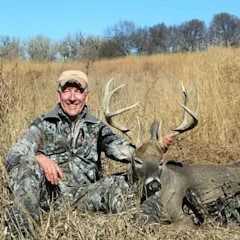Di-Lane Wildlife Management AreaLocation: east-central GeorgiaSize: 8,100 acresZIP: 30830
Last year Di-Lane whitetail hunters posted the highest overall success rate and the best success rate on mature bucks in the state. That’s saying a lot considering that well over 50 percent of Georgia’s statewide buck harvest is 2 1/2-year-olds or better. This is classic quail country in the state’s upper coastal plain; about 70 percent of the area is forested in hardwoods and pines, with the balance in old fields gone to seed. A dense understory of palmetto, gallberry, wax myrtle and grasses supply abundant cover and forage for deer. Access is unlimited during archery season; firearms hunters who miss the September application deadline for the quality buck drawing can look forward to a check-in hunt that welcomes all comers November 8-10. A season-long antler restriction applies: bucks need at least four points on one side.
Redlands Wildlife Management AreaLocation: east-central GeorgiaSize: 37,500 acresZIP: 30642
Georgia has one of the nation’s longest firearms deer seasons (74 days in the northern half of the state and 88 days in the southern half), but its wildlife management areas usually limit gun hunts to no more than a couple of weeks. An exception is Redlands. This WMA in the Oconee National Forest is co-managed by the Georgia DNR and the U.S. Forest Service, and it’s open to firearms hunting for all but three weeks of the northern-zone deer season. The terrain is rolling hills and bottomland flood plain, and the cover varies between planted pine and old hardwood stands rich with oak and other mast-producing trees. “Redlands isn’t a quality deer area,” says DNR wildlife biologist Don McGowan, “but there’s a pretty good component of 2 1/2-year-old bucks.” Hunters willing to put some distance between themselves and roads could tangle with something better. “There are undoubtedly some bigger bucks in there,” says McGowan, “but they’re secluded.”


